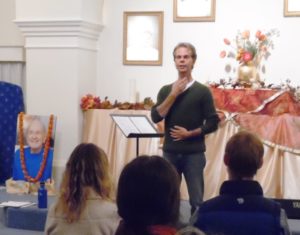In almost every piece of music there is at least one passage that challenges our vocal skill (and sometimes our patience, too!). Many singers believe that by just repeating the song over and over, they will eventually overcome the difficulty and be able to sing it flawlessly. Unfortunately, that’s almost never true!
How are we to deal with tricky passages?
- First of all, sing that passage and try to identify which note or group of notes are weak and why. Maybe they’re high, or you’re singing a word that contains a vowel that you’re particularly uncomfortable with, or they are in a challenging area of your range.
- Whatever the reason might be, isolate that note (or group of notes) and focus on one at a time. Practice holding that note on the particular sound in the word you have to say. For example, if you’re singing the word “sky”, hold the note on the sound “aahh”, because that’s actually the main sound in that word (funny mysteries of the English languages!).
- While you hold the note, make sure that:
- You’re supporting your breath correctly from the diaphragm and belly muscles. You should feel that your belly muscles are engaged while singing.
- Your throat is relaxed. If not, relax it consciously while you hold the note. When you do, you will notice a progressive improvement in the quality of the sound.
- Your mouth is open and round.
- While holding the sound, as you hear an improvement in the quality of your sound, pay particular attention to your feeling in the throat. That’s the most important thing to focus on , because you will have to recreate that same feeling every time you sing that note, until you’re able to master the passage without thinking about it.
- Add back the consonants of the word in question and make sure that you can still place it correctly.
- After working on each “problematic” note separately, put them back into the context of the whole passage and see if you notice an improvement. In my experience, there’s always an improvement after completing this process.
- If necessary, repeat this sequence several times, until that passage is no longer an issue.
Describing this procedure takes longer than going through it; much less than repeating the whole song over and over. The difference is that, by following this practice, you will actually SOLVE the problem.
Being able to practice efficiently is one of the most important things a musician can learn. Too much time is wasted repeating the same mistakes and imperfections over and over, reinforcing them, instead of getting rid of them.
More importantly, spending time to make a song absolutely flawless, from the technical standpoint, makes it possible to perform with your mind completely free to focus on what really matters: sharing inspiration, energy, and consciousness without impediments. That’s what singing and music are really all about.
I’m on AMAZON and iTUNES!
Last month I announced that my course, Singing for Busy People, is now available on Amazon. Now I’m happy to let you know that the same course is also available on iTunes!
What is it?
The course consists of downloadable audio files with a different vocal exercise for every day of the week. The recording will guide you through the practice of the exercises, giving you special instructions, reminders, and addressing the most common issues students often run into.
This is my first time on Amazon and iTunes, and what I’m learning is that the more positive reviews a product has, the more likely people will buy it.
Therefore, I’d really appreciate it if you were to go check it out and, if you feel so inclined, write a short review. This will help other aspiring singers find, and benefit from, Singing for Busy People!
Click here for the course on Amazon
Click here for the course on iTunes
THANK YOU!


 In 2007 I was hired as a music teacher at a spiritually-oriented, alternative college. I enjoyed teaching there; the class was small – around ten students – and they all seemed special people to me. They were exceptionally centered and wise, especially for their age.
In 2007 I was hired as a music teacher at a spiritually-oriented, alternative college. I enjoyed teaching there; the class was small – around ten students – and they all seemed special people to me. They were exceptionally centered and wise, especially for their age. by Ramesha Nani
by Ramesha Nani